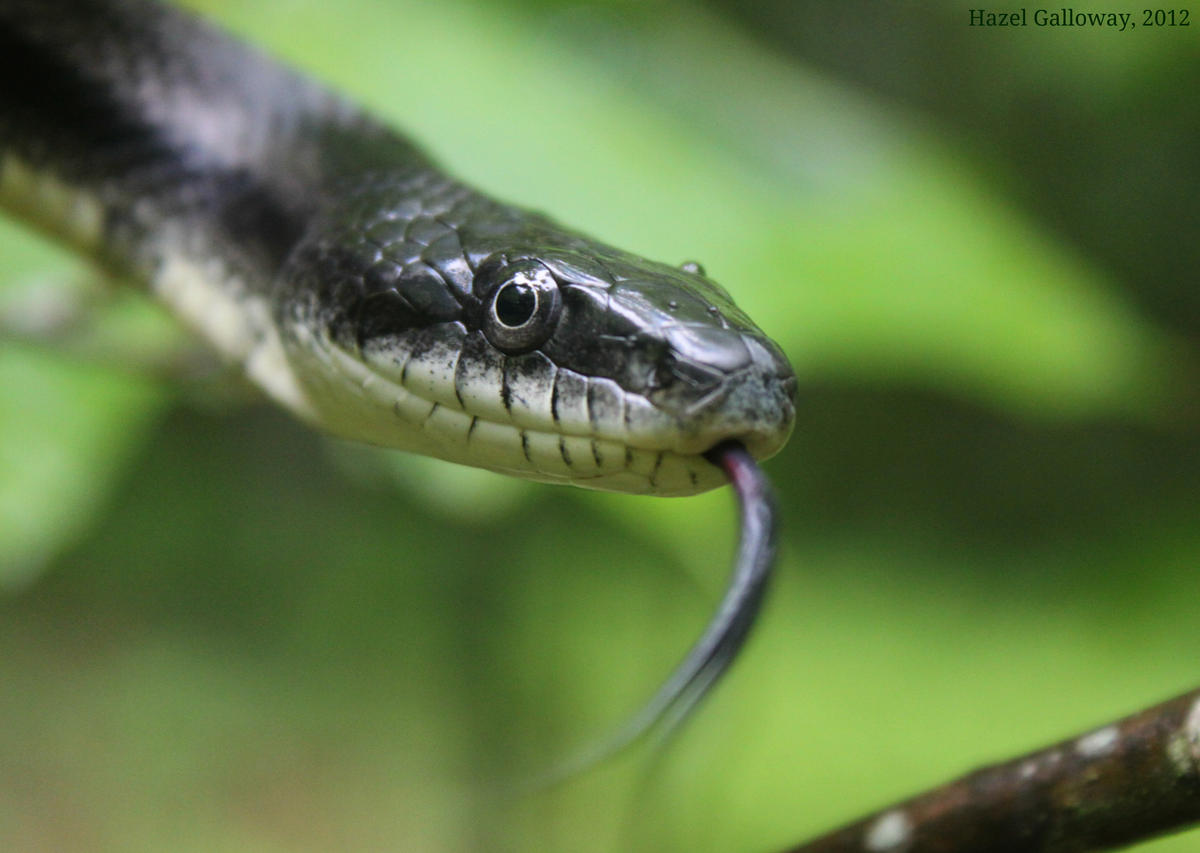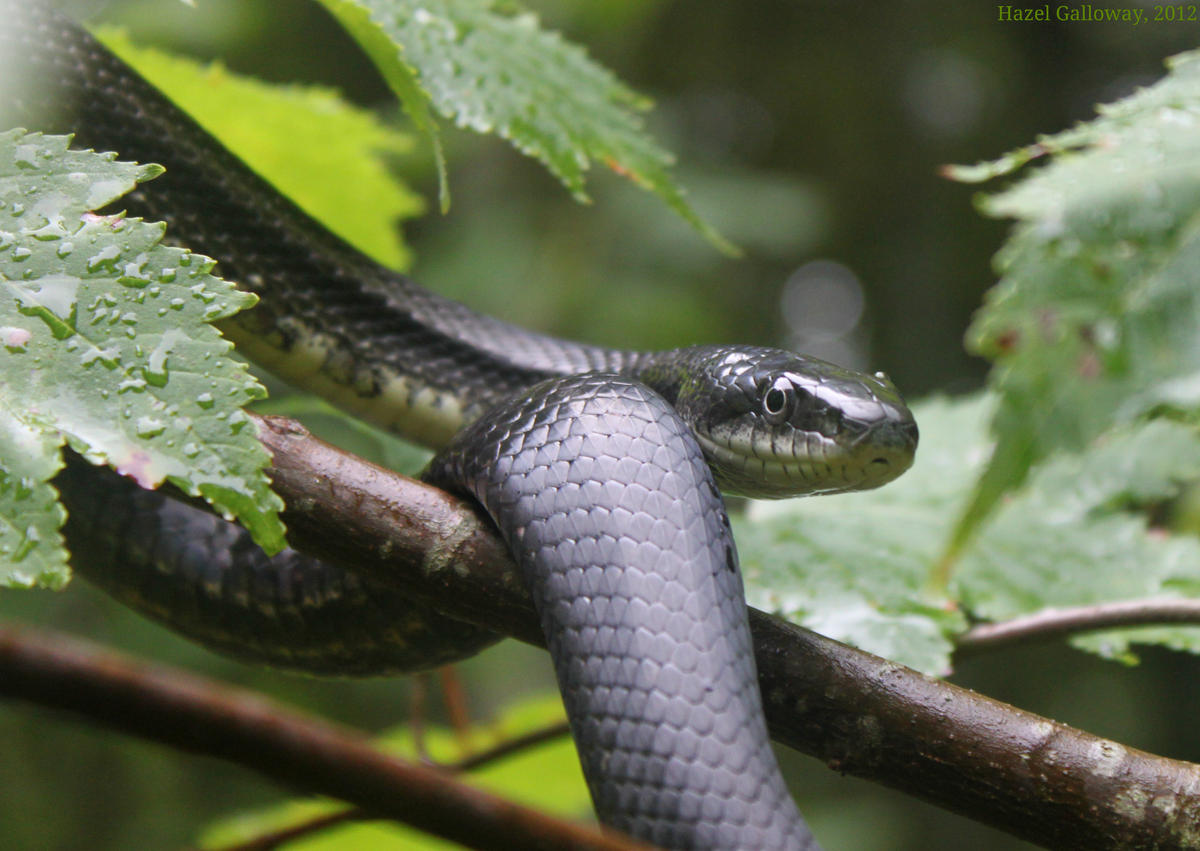Black rat snakes are the largest species of snake in our area, reaching lengths longer than either the timber rattlesnake or the eastern watersnake. Although they usually reach an adult length of 107-183 cm (3.5-6'), these snakes can grow to the record length of 256.5 cm (8’ 5”)—that is, easily stretching from the floor to the ceiling in an average room.
Black rat snakes are usually quite easily recognizable over much of their range, barring the presence of a second, similar species such as the northern black racer or eastern coachwhip. However, both of those species have dark coloration on their undersides as well as their backs, whereas the black rat snake has a lighter underside, usually patterned with grey or brown over a background of yellow or white. Also, while many similar species have smooth scales, the black rat snake has keeled scales—that is, each scale has a longitudinal ridge in the middle, much like the keel on a boat. The dorsal side of these snakes is a glossy black color. However, in the areas between scales, especially on younger snakes, a colored pattern is visible and often includes traces of white, yellow, orange, or red. On very young snakes, patterns of light and dark are very pronounced, making the snake appear entirely different and often more difficult to identify.
The black rat snake is a very widespread species. They can be found throughout most of eastern to central North America except for states near to the southern coast, where other species of rat snake exist. Widely distributed in a number of different habitats, these snakes can be found in forests, stream and riverbanks, rocky hillsides, open areas such as fields or farmland, and developed areas inhabited by humans. They spend a great deal of time in trees, particularly tree species with rough bark that allows them easy purchase. Rat snakes spend the winter hibernating in deep crevices or underground, emerging in March-May. A few weeks after emerging, they begin to seek out mates. Around five weeks after mating, the female lays 12-20 eggs in a well hidden spot. Around 2½ months later, the eggs hatch into vigorous young snakes, and will become sexually mature by the time they are four years old. Black rat snakes have been known to live for almost 34 years in captivity, but their lifespan in the wild is unknown.
Like the adults, the young snakes are carnivores on a wide variety of small animals, including small lizards, baby mice, and frogs. As they grow, they take on larger prey, mainly rats, mice, and other small rodents, which they kill by constriction. When threatened, these snakes tend to freeze and remain motionless until the threat has passed. However, although they are not poisonous, they do sometimes coil up, behave aggressively, and bite. They also have a trick of vibrating their tail in the dry leaves when threatened, mimicking a rattlesnake. Like many snakes, they are capable of producing musk, a foul-smelling substance, from their vent to the displeasure of many potential predators.
This snake was found by Joe in the junco aviary. It is a young male, as is evident from the slight patterning still visible between the black scales and the rapid tapering of its tail after the vent (females’ tails taper more gradually).
- A Field Guide to Reptiles and Amphibians: Eastern and Central North America. 3rd Edition. Boston: Houghton Mifflin Company,1998.
- http://animaldiversity.ummz.umich.edu/site/accounts/information/Panthero...
- http://eol.org/pages/794909/details
- http://www.marshall.edu/herp/snakes/black_ratsnake.htm




